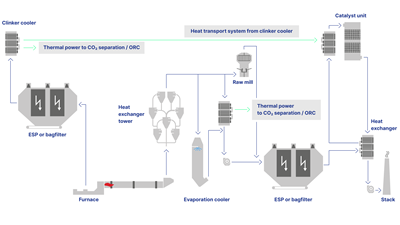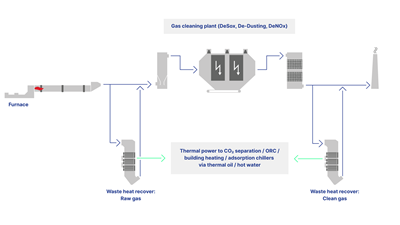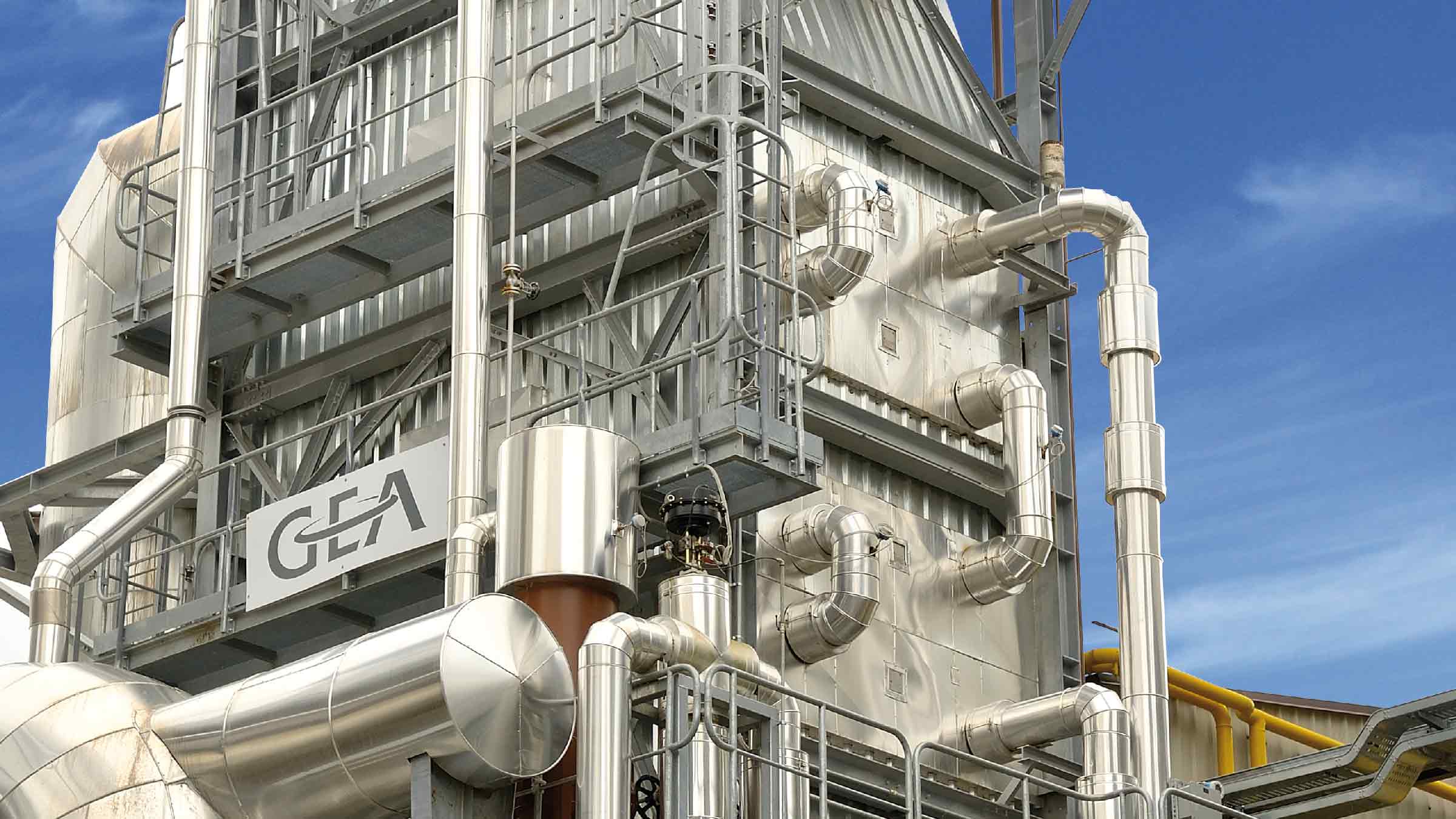CO2 saving processes
Energy recovery from flue gases
Increasing economic efficiency and reducing the CO2-emissions with energy recovery units in your industrial process.
Energy saving is a key success factor when trying to achieve a reduction of the carbon footprint, it can be made by improving process efficiency to recover waste heat, not only from the production process, but also from the hot process gas that in many cases is simply released into the atmosphere, unutilized.
The saving of energy costs and the reduction of CO2 emissions by avoiding fossil fuels make an Energy Recovery Plant an investment that not only provides competitive advantages that positively impact the final product cost, but also helps preserve our environment for the future generations.
GEA offers WHR (Waste Heat Recovery) units alone or in combination with gas cleaning technologies as well, using heat exchanger systems suitable for waste gas conditions such as dust content.
These heat exchanger units have been used in diverse projects worldwide and have proven reliable and highly efficient.
Usually, the GEA energy recovery system consists of:
- Waste Heat Recovery Units
- ORC module
The heat recovered from the flue gas can be used for:
- power generation
- compressed air production by use of thermal oil
- local and district heating networks
- heat for industrial processes
Particular features
- Process-optimized heat recovery
- High serviceability
- High modular flexibility, apt for narrow spaces
- Quick ROI (Return of Investment), sustainable reduction of energy costs
- Electricity production by ORC (Organic Rankine Cycle) technology
Working Principle
Working Principle of Energy Recovery from Flue gasesThe largest sources of waste heat for most industries are exhaust and flue gases. Either as high-temperature gases from burners or at lower temperatures within the air treatment process.Cement industry
Waste heat can be recovered from the clinker cooler waste gas as well as the preheater waste gas. Different heat exchanger systems shall be used for the two waste gases, because of the difference in dust content.
The heat can be used for the operation of an ORC turbine for power generation or to generate hot thermal oil or water for other uses.
The use of the heat energy in the gas cleaning process in the SCR is possible as well:

Glass industry
Depending on the available gas temperature upsteam and downstream the gas cleaning, the waste heat can be recovered at two different stages of the cycle.

Downloads
Related Products

Waste gas heat exchanger
In the last years the high prices of energy and the need to reduce CO2 emissions increased the importance of energy recovery applications for all industrial processes.
Hot process gas going to the plant stack means losing valuable thermal energy which could be easily recovered and/or converted in electric power. Waste heat in industry is a poten...

Organic Rankine Cycle (ORC) Module
Energy-intensive processes process industry generate high amounts of waste emissions that are often unexploited. However, using their thermal energy would make good sense, both economically and ecologically, with regard to steadily rising energy costs, the need of companies to stay competitive, and increasingly strict environmental regulations. ...
GEA Insights India
All pharmaceutical freeze-drying vials are the same! Aren't they?
Whether it’s a fad or the future, 100% vial traceability is becoming an increasingly important consideration in the pharmaceutical freeze drying industry. Keeping a close eye on developments is GEA. We’re investigating possible solutions and, what’s more, we have the experience, expertise and know-how to implement them.
Alcohol-free beer: They want it all – they want less
There was a time when the phrases ‘non-alcoholic beer’ and ‘tastes good’ were seldom used together in the same sentence, particularly by consumers. But low-proof and alcohol-free beers have come a long way – many of them now refreshing drinks in their own right – thanks in no small part to technology from GEA.
Innovating patient care with aseptic spray drying
At GEA, our commitment to engineering for a better world fuels our pursuit of innovative solutions that enhance patient care and safety. One of our most promising ventures in recent years is aseptic spray drying – a technology that promises to revolutionize pharmaceutical manufacturing.


